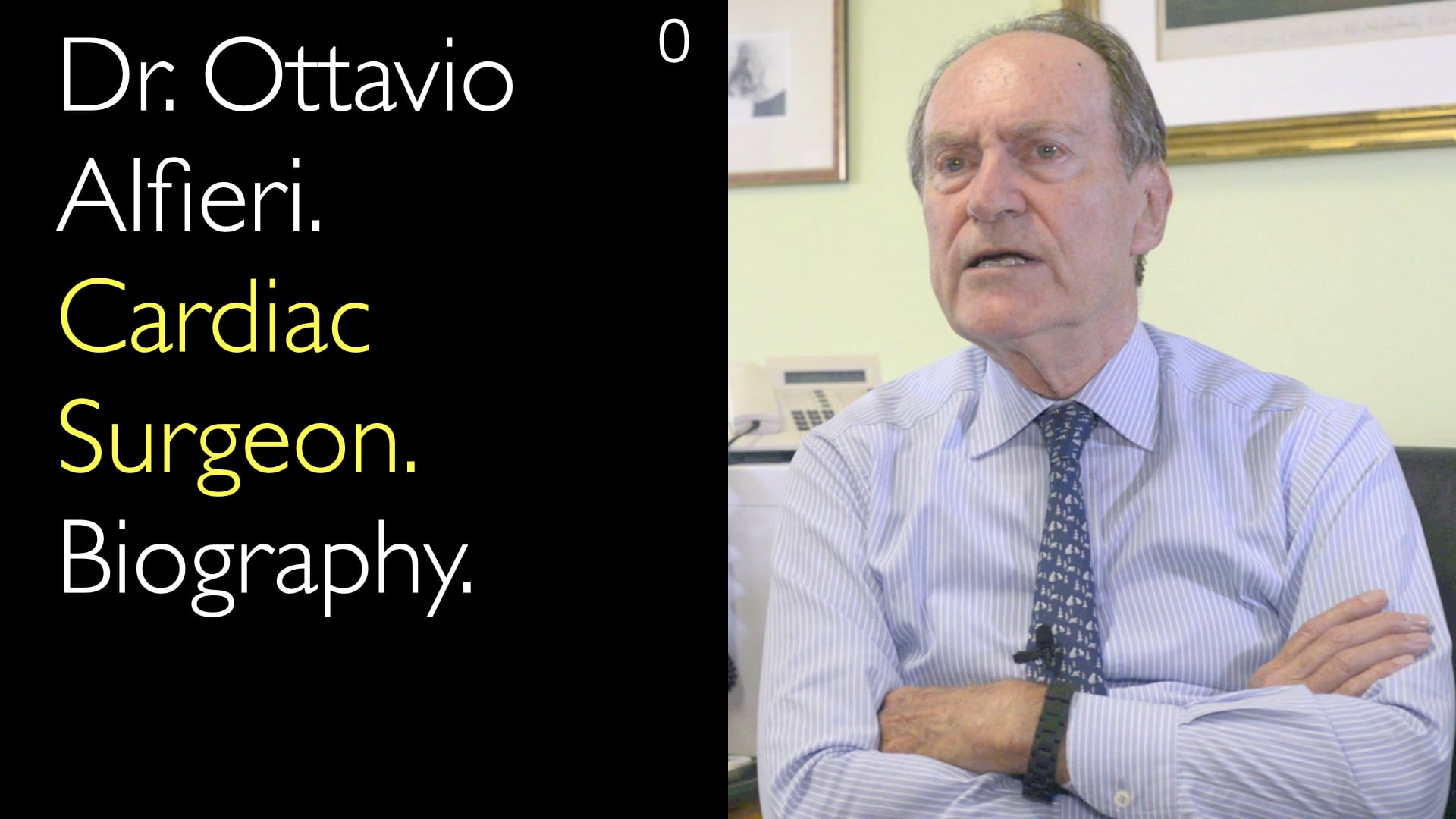심장외과 분야의 선도적 전문가인 Ottavio Alfieri 박사(MD)가 울혈성 심부전의 고급 외과적 치료 옵션을 논의하며, 좌심실 리모델링에 주목합니다. 역사적으로 심장 이식이 말기 심부전의 주요 치료법이었으나, 최신 외과 기법들은 이제 좌심실 리모델링을 역전시키거나 지연시킬 수 있는 대안을 제공합니다. Alfieri 박사는 허혈성 심근병증, 부정맥, 승모판 폐쇄부전과 같은 병리생리학적 요소를 다루는 중요성을 설명합니다. 그는 좌심실의 외과적 회복이 심장 기능과 삶의 질을 개선할 수 있는 이점을 강조하며, 개별 환자 요구에 맞춘 치료를 위한 다학제적 접근법의 가치도 함께 제시합니다.
울혈성 심부전 및 좌심실 리모델링의 최신 수술적 치료 옵션
목차 바로가기
심부전과 좌심실 리모델링의 이해
울혈성 심부전은 좌심실 리모델링을 포함한 복잡한 질환 과정을 동반합니다. Ottavio Alfieri 박사(의학박사)에 따르면, 심부전은 특발성 심근병증과 허혈성 심근병증 등 다양한 원인에서 발생할 수 있으며, 허혈성 심근병증은 심부전 환자의 약 3분의 2에서 나타납니다. 이러한 상태들은 허혈, 심근 hibernation, 또는 심근 stunning으로 인해 심장 수축 기능이 저하됩니다. 이러한 병태생리학적 요인들을 해결하는 것이 심부전 치료의 핵심입니다.
좌심실 수술적 복원술의 장점
좌심실 수술적 복원술은 심부전 환자에게 상당한 이점을 제공합니다. Ottavio Alfieri 박사(의학박사)는 이 수술이 좌심실의 크기를 줄이고 생리적인 타원형 형태를 회복시켜 수축력을 향상시키고 비동기 수축을 교정한다고 설명합니다. 부정맥을 유발하는 초점을 절제함으로써 악성 부정맥도 해결되어 전반적인 심장 기능과 환자의 삶의 질이 개선됩니다.
승모판 폐쇄부전 및 부정맥의 치료
승모판 폐쇄부전과 심방세동 같은 부정맥은 심부전의 흔한 동반 질환입니다. Ottavio Alfieri 박사(의학박사)는 수술적 중재를 통해 승모판 문제를 교정하고 심방세동 절제술을 시행할 수 있다고 말합니다. 이러한 치료는 재관류술과 결합되어 허혈이나 심근 hibernation 같은 좌심실 기능 장애의 근본 원인을 해결합니다.
심부전을 위한 하이브리드 수술적 접근법
Alfieri 박사는 단일 수술에서 여러 절차를 결합하는 하이브리드 접근법을 소개합니다. 예를 들어, 좌심실 복원술을 승모판 교정, 심방세동 절제술, 관상동맥우회술과 함께 수행할 수 있습니다. 또는 수술적 리모델링과 경피적 중재(예: 관상동맥 스텐트 삽입술이나 심방세동 절제술)를 결합한 하이브리드 방식도 가능하며, 이는 환자의 수술 위험과 임상 상태에 맞게 조정됩니다.
다학제적 심장팀의 역할
Alfieri 박사가 강조하듯, 다학제적 심장팀은 심부전 치료에 필수적입니다. 이 팀 접근법은 다양한 분야의 전문가들이 협력하여 포괄적인 의사 결정과 복잡한 절차의 실행을 보장합니다. 이를 통해 울혈성 심부전 및 좌심실 리모델링 환자에게 맞춤형 치료 계획을 제공하고 결과를 최적화할 수 있습니다.
전체 대화 내용
Anton Titov 박사(의학박사): 울혈성 심부전의 수술적 치료 옵션에 대해 논의해 보겠습니다. 울혈성 심부전에는 좌심실 리모델링이라는 질환 과정이 동반됩니다. 역사적으로 심장 이식이 말기 울혈성 심부전의 유일한 선택지였지만, 이제는 좌심실 리모델링을 역전시키거나 늦추는 새로운 수술 기법들이 등장했습니다. 오늘날 울혈성 심부전 환자를 위한 수술적 치료 옵션에는 어떤 것들이 있나요?
Ottavio Alfieri 박사(의학박사): 울혈성 심부전 환자를 평가할 때는 다양한 병태생리학적 요인들을 고려해야 합니다. 예를 들어, 특발성 심근병증으로 인해 심장이 제대로 수축하지 못하는 경우가 있습니다. 이는 허혈성 심근병증보다는 덜 흔하지만, 허혈성 심근병증이 심부전 환자의 약 3분의 2를 차지합니다.
심부전의 원인은 다양합니다. 허혈, 심근 hibernation, 심근 stunning 등이 있을 수 있습니다. 심장이 충분한 혈액 공급을 받지 못하면 수축력이 약해집니다. 또한 심실의 확장이나 일부 영역의 비정상적인 수축도 좌심실 기능 장애를 일으킬 수 있습니다.
심방세동 같은 부정맥도 좌심실 기능 저하에 크게 기여합니다. 악성 부정맥도 문제가 될 수 있습니다. 따라서 이러한 모든 병태생리학적 요소들을 고려해야 합니다. 예를 들어, 비정상 수축 영역과 좌심실 확장이 있다면 좌심실 수술적 복원술을 고려할 수 있습니다.
이 수술은 좌심실 크기를 현저히 줄이고 생리적인 타원형 형태를 회복시켜 매우 효과적입니다. 심실의 형태는 수축 기능에 중요합니다. 좌심실 수술적 복원술을 통해 삶의 질이 개선되고, 수축 성능이 향상되며, 비동기 수축이 제거됩니다. 또한 부정맥을 유발하는 초점을 절제함으로써 악성 부정맥도 해결할 수 있습니다.
게다가 승모판 폐쇄부전이 동반된다면 이를 치료할 수 있습니다. 승모판 역류도 심부전을 악화시키는 요인입니다. 절제술로 심방세동을 제거할 수도 있습니다. 재관류술을 통해 심근 hibernation이나 허혈을 치료하면 좌심실 수축 기능 장애를 해결할 수 있습니다. 이러한 수술들을 함께 수행하면 심부전을 효과적으로 치료할 수 있습니다.
다만 심부전이 너무 진행되고 박출률이 매우 낮으며 심실이 대부분 섬유화된 경우에는 심장 이식이나 좌심실 보조 장치, 인공 심장이 유일한 옵션입니다. 하지만 이런 경우는 비교적 드뭅니다.
Anton Titov 박사(의학박사): 이러한 수술 기법들은 심부전의 진행을 막거나 좌심실 리모델링을 역전시키기 위해 계획되나요? 한 번의 수술로 수행할 수 있나요, 아니면 여러 차례에 걸쳐 진행하나요?
Ottavio Alfieri 박사(의학박사): 많은 절차를 한 번의 수술에서 수행할 수 있습니다. 예를 들어, 좌심실 복원술을 승모판 폐쇄부전 교정, 심방세동 절제술, 재관류술과 함께 진행할 수 있습니다. 이를 통해 심근 hibernation 같은 문제도 해결됩니다.
Anton Titov 박사(의학박사): 네, 매우 중요하네요. 따라서 하이브리드 심장 수술을 통해 관상동맥우회술과 판막 수술을 동시에 수행하면서 심부전과 좌심실 리모델링도 해결할 수 있다는 말씀이시죠.
Ottavio Alfieri 박사(의학박사): 맞습니다. 두 수술을 함께 할 수도 있고, 하이브리드 방식으로 접근할 수도 있습니다. 예를 들어, 수술적 좌심실 리모델링과 함께 경피적 관상동맥 중재술로 허혈을 해결하거나, 경피적 심방세동 절제술을 결합할 수 있습니다. 환자의 수술 위험, 임상 상태, 나이에 따라 최적의 중재 방법을 결정해 맞춤형 치료를 제공할 수 있습니다.
Anton Titov 박사(의학박사): 따라서 다학제적 접근법의 중요성도 강조되고 있군요.
Ottavio Alfieri 박사(의학박사): 그렇습니다! 말씀드린 대로 이 치료에는 여러 전문 분야가 협력해야 합니다. 이는 심장팀의 전형적인 예로, 의사 결정과 절차 수행 모두에서 매우 중요합니다.





